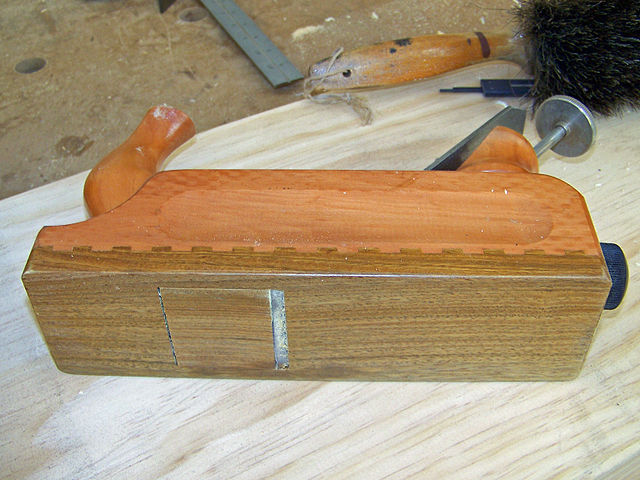Lignum vitae is a wood, also called guayacan or guaiacum, and in parts of Europe known as Pockholz or pokhout, from trees of the genus Guaiacum. The trees are indigenous to the Caribbean and the northern coast of South America and have been an important export crop to Europe since the beginning of the 16th century. The wood was once very important for applications requiring a material with its extraordinary combination of strength, toughness, and density. It is also the national tree of the Bahamas, and the Jamaican national flower.
Mallet of lignum vitae, all sapwood
Wood of Bulnesia sarmientoi
Pete Seeger with his extra-long, lignum vitae banjo neck
A hand plane with a lignum vitae sole, likely not actual Guaiacum but Bulnesia, and a pearwood body
Guaiacum, sometimes spelled Guajacum, is a genus of flowering plants in the caltrop family Zygophyllaceae. It contains five species of slow-growing shrubs and trees, reaching a height of approximately 20 m (66 ft) but usually less than half of that. All are native to subtropical and tropical regions of the Americas and are commonly known as lignum-vitae, guayacán (Spanish), or gaïac (French). The genus name originated in Taíno, the language spoken by the native Taínos of the Bahamas; it was adopted into English in 1533, the first word in that language of American origin.
Guaiacum
The invention of the use of Guaiacum for syphilis
Image: Guaiacum angustifolium
Image: Guaiacum coulteri








